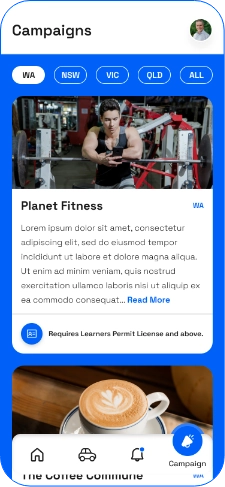
i
With numerous brands vying for attention, traditional media channels like TV, radio, and print have become saturated, leading to decreased effectiveness.
With the rise of digital media, consumers are spending less time with traditional media, making it harder for advertisers to reach their target audience.
Traditional advertising methods often lack concrete metrics to measure the return on investment, making it challenging for businesses to gauge the effectiveness of their campaigns.
Australia has strict advertising regulations, especially for certain industries, making it challenging for businesses to craft effective ad campaigns without crossing regulatory boundaries.
Australia's vast geography means that reaching consumers in remote or less populated areas can be challenging and expensive.
Advertising in prime locations or during peak times in Australia can be prohibitively expensive for many businesses.
Traditional advertising methods, especially print, have environmental implications, leading to a push for more sustainable advertising solutions.
The advertising industry has been slow to adopt new technologies and methods, leading to a gap in innovative advertising solutions.
Australia's diverse population means advertisers need to cater to a wide range of cultural and linguistic preferences.
Traditional advertisements, especially billboards or print ads, have a short lifespan, requiring frequent updates and investments.

CMARIX prioritized the end-users, ensuring that the platform was intuitive, user-friendly, and catered to the needs of both advertisers and drivers.
Before diving into development, CMARIX created interactive prototypes to visualize the user flow, ensuring all stakeholders were aligned with the design direction.
Adopting an agile methodology, CMARIX ensured that the development process was iterative, allowing for regular feedback and adjustments.
Recognizing the need for real-time data access and seamless interactions, CMARIX developed a robust backend system that could handle large volumes of data efficiently.
Leveraging technologies like GPS for real-time location tracking and advanced algorithms for driver scoring ensured the platform was cutting-edge.
Ensuring that the platform was accessible across devices, CMARIX adopted a responsive design approach, making the platform accessible on both desktop and mobile.
Given the sensitive nature of user data, CMARIX implemented stringent security protocols to protect user information and ensure data integrity.
Throughout the development process, CMARIX conducted rigorous testing to ensure the platform was bug-free and met all functional requirements.
CMARIX maintained open communication channels with Ads on Wheels, ensuring that feedback was incorporated promptly and the platform evolved in line with the project's vision.
Beyond the initial development, CMARIX provided ongoing support, ensuring the platform remained updated and addressed any user concerns or issues.
CMARIX might have adopted a modular architectural approach, ensuring that each component of the platform can function independently, allowing for scalability and easy maintenance.
Leveraging technologies like WebSockets for real-time data transmission, ensuring that metrics like GPS data, driver scores, and campaign metrics are updated in real-time.
Traditional advertising methods often lack concrete metrics to measure the return on investment, making it challenging for businesses to gauge the effectiveness of their campaigns.
Australia has strict advertising regulations, especially for certain industries, making it challenging for businesses to craft effective ad campaigns without crossing regulatory boundaries.
CMARIX could have adopted an API-first approach, ensuring seamless integration between the mobile app, web platform, and backend systems.
Leveraging cloud platforms like AWS for scalable storage solutions, data analytics, and ensuring high availability.
Implementing encryption techniques, both at rest and in transit, to ensure user data's safety and confidentiality.
Using frameworks like Bootstrap to ensure the web platform is accessible and optimized across devices.
Utilizing frameworks like React Native for cross-platform mobile app development, ensuring a consistent user experience across Android and iOS.
Leveraging backend frameworks like Node.js for efficient data processing, handling user requests, and integrating with databases.
Using databases like MongoDB, ensuring efficient data storage, retrieval, and analytics.
Implementing CI/CD pipelines for automated testing and deployment, ensuring the platform remains bug-free and updated.
CMARIX would have conducted thorough UX research, creating wireframes and mockups to ensure an intuitive user journey.
Ensuring the web platform is optimized for search engines, increasing its visibility and reach.




Aa Bb Cc Dd Ee Ff Gg Hh Ii Jj Kk Ll Mm Nn Oo Pp Qq Rr Ss Tt Uu Vv Ww Xx Yy Zz
Given the diverse functionalities of Ads on Wheels, a microservices approach would allow each functionality (like GPS tracking, driver scoring, campaign management) to operate as independent services. This ensures scalability, easier maintenance, and robustness.
Each microservice communicates via RESTful APIs, and they can be independently deployed, allowing for flexibility and resilience.


A single entry point for all client requests, ensuring security, rate limiting, and request routing.
Using solutions like Amazon API Gateway, coupled with OAuth for secure API access.
For features like live GPS tracking and real-time campaign metrics, real-time data processing is crucial.
Technologies like Apache for data streaming, coupled with WebSockets for real-time updates on the client side.
Protecting user data and ensuring secure transactions.
SSL/TLS for encrypted data transmission and JWT (JSON Web Tokens) for secure authentication.
For consistent deployment environments and scaling.
Docker for containerization of services and Kubernetes for orchestration, ensuring auto-scaling, load balancing, and self-healing.
To handle large volumes of data and ensure high availability.
Using databases like MongoDB with sharding for horizontal scalability and replication for data redundancy.
To ensure scalability, high availability, and resilience.
Leveraging cloud platforms like AWS. Services like Amazon S3 for data storage, and Amazon RDS for relational database management.
For faster content delivery and reduced latency.
Leveraging CDNs like Cloudflare to cache content closer to the end-users.

Register with personal details, vehicle information, and driving preferences.
GPS integration for live location tracking during campaigns.
An algorithmic score based on driving behavior, ensuring brand safety.
Track earnings from campaigns and withdraw funds.
Define campaign objectives, target zones, duration, and budget.
Access real-time metrics like impressions, kilometers driven, and heat maps.
Choose driver ambassadors based on ratings, location, and vehicle type.
Rate and review driver ambassadors post-campaign.
Oversee and manage both driver ambassadors and advertisers.
Monitor ongoing campaigns, approve new campaigns, and handle disputes.
Get insights into platform usage, top-performing drivers, and successful campaigns.
Handle payouts to drivers and invoice advertisers.

Visual representation of campaign reach in nominated zones.
Real-time updates on campaign metrics.
Algorithmic calculation of potential ad impressions based on route and duration.
Suggest optimal routes for drivers to maximize campaign visibility.
Ensure drivers stay within the nominated campaign zones.
Access past routes and campaign metrics for analysis.
Monitor metrics like speeding, harsh braking, and mobile phone usage.
Notify drivers of unsafe behavior and areas with high accident rates.
New drivers undergo a monitored qualification period to ensure safety and compliance.
Direct communication channel between advertisers and drivers.
Real-time alerts for campaign updates, earnings, and platform announcements.
Integration with payment gateways for safe and swift transactions.
Detailed insights into earnings from each campaign for driver ambassadors.
Leveraging databases like MySQL for structured data storage, ensuring data integrity and efficient retrieval.
Using databases like MongoDB for flexible data storage, especially for user profiles, feedback, and reviews.
Secure token-based authentication ensuring data security and user verification.
Define permissions based on user roles (Driver, Advertiser, Admin) ensuring restricted access to certain functionalities.
Leveraging technologies like Node.js for non-blocking, event-driven operations, ensuring real-time data processing.
Using Apache Kafka for handling real-time data streams, especially for features like live GPS tracking.
Scheduled backups of databases and critical data.
Implementing strategies to quickly recover from potential data losses or server failures.
Development of stateless APIs ensuring seamless communication between the frontend and backend.
A unified entry point for all API requests, providing features like rate limiting, caching, and security.
Encrypting sensitive data at rest using algorithms like AES.
SSL/TLS encryption for data in transit, ensuring secure communication between the server and clients.
Ensuring the backend can handle increased loads by adding more instances.
Distributing incoming network traffic across multiple servers, ensuring high availability and fault tolerance.
Implementing unit tests, integration tests, and end-to-end tests to ensure code quality.
Using tools like GitLab CI for deployments, ensuring quick and consistent releases.


Frontend
Web: Angular
Mobile: React Native

Backend
Server: Node.js
API: RestFul

Databases
Relational: MySQL
NoSQL: MongoDB

Real-time Data Processing
Data Streaming: Apache Kafka

Cloud Infrastructure
Cloud Platform: AWS

Deployment
Tools: GitLab

Containerization & Orchestration
Containerization: Docker
Orchestration: Kubernetes
Your unique concepts will be crafted into a remarkable end result by our team.